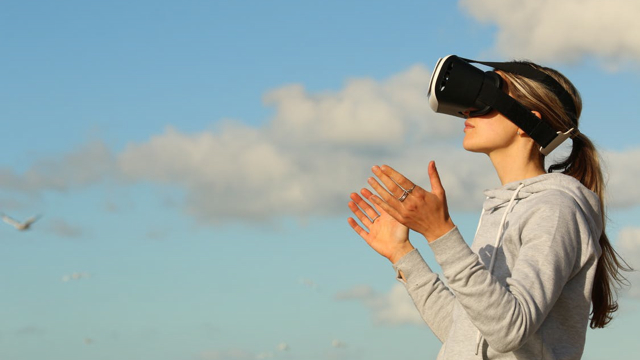During Display Week in Los Angeles, several VR headset displays were showcased by companies including Google, LG, Japan Display and Samsung. Google and LG developed a display panel with 18.1 megapixels of detail per eye, which was similar to those from Japan Display and Samsung. The Google/LG panel, at 18.1 megapixels, goes up against Oculus Rift’s 1.3 megapixel per eye and HTC Vive Pro’s 2.2 megapixel per eye. Facebook was also at Display Week, but wasn’t quite ready to show off its Half Dome varifocal prototype.
VentureBeat reports that it’s not easy to compare “how these panels might perform in a real world scenario,” because LG’s, for example, was “shown through a VR headset’s lens, but with still images and no tracking.”
Samsung showed three different VR headsets, “each with more pixels packed into a smaller display.” The first display “showed a comparison between the kinds of VR headsets we already have and one with a filter designed to remove the screen door effect,” while “in comparison, Samsung’s highest resolution system on display offered 1200 pixels per inch but still had the screen door effect.”
Japan Display said its LCD panel offered “1001 pixels per inch,” but “actually showed a moving 3D picture that made it impossible to see the screen door effect at all.”
Also presented were “a variety of light field display prototypes that are likely years from commercial feasibility” but will, ultimately, “provide more realistic visuals.” In a dark room, Samsung presented a 5.09-inch light field display providing 1440 x 2560 pixels, split into 26 different views, on a smartphone.
Although no headset manufacturer has set out a timeline to present these new technologies, VentureBeat believes, “it would be surprising if headset makers like Sony, Facebook and HTC don’t incorporate ultra-high resolution panels into their upcoming designs.”
Elsewhere, VentureBeat reports that, during a keynote at Display Week, head of Facebook’s Reality Labs’ Computational Imaging Team Douglas Lanman explained how and why Facebook engineered its moving-display Half Dome system.
“Nearly all consumer HMDs present a single fixed focus,” he explained. “Some have focus knobs, but most just lock the optical focus of the displays to something around two meters. When you look at a near object, vergence (eye rotation) and accommodation (deformation of the eye’s crystalline lens) move together. As your lens deforms to focus on a nearby virtual object, it is focusing away from the fixed focus of the HMD. So, most people report seeing some blur. Sustained vergence-accommodation conflict has been linked, in prior vision science publications, to visual fatigue, including eye strain.”
A varifocal display, he continued, could make interactions within arms reach less blurry.


No Comments Yet
You can be the first to comment!
Sorry, comments for this entry are closed at this time.